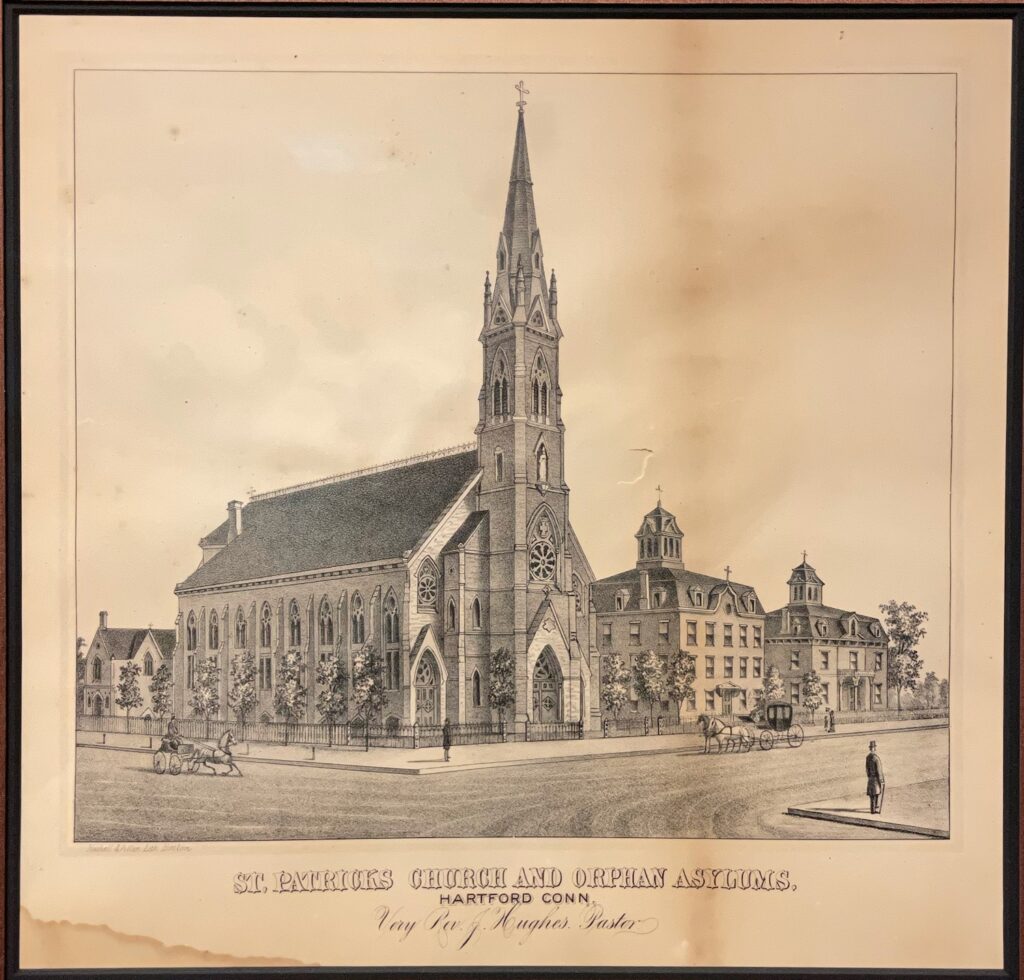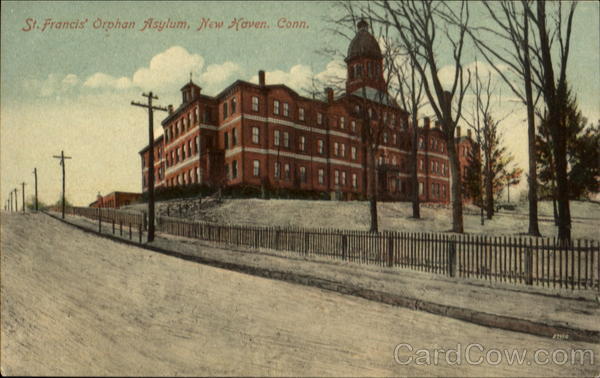The youngest members of the group that calls itself The Voices of St. Joseph’s Orphanage are in their late 50s. The oldest are pushing 80.

HISTORY: https://spsact.org/our-parish/our-history/
*PROSPECT HILL
Another important occupant of the district in the 1870s was the St. Francis Roman Catholic Orphanage (c. 1870, later demolished), a grandiose Second Empire building occupying grounds stretching from Prospect Street to Whitney Avenue just north of Highland Street. Edgehill Road, which was not cut through the estate until 1900, still retains the gateposts and stone wall of the orphanage. North of the orphanage, the Connecticut Agricultural Experiment Station erected its first two buildings in the late 19th century (previous buildings on the site, adapted from a former residential estate, are now demolished). MORE: http://nhpt.org/prospect-hill

Priest who led New Haven orphanage cleared of sex abuse charge
IN CASE YOU NEED RECORDS: (if you were adopted out)

https://www.ccaoh.org › how-we-help › adoption-records
Adoption Records – Catholic Charities Archdiocese of Hartford
Catholic Charities requires that each request is made in a notarized letter with one form of identification attached. Before submitting this letter, contact our Adoption Coordinator Ivelisse Acevedo at 860-297-7802 or iacevedo@ccaoh.org to discuss your individual requirements and circumstances.

Orphanages are not what they used to be. They aren’t even called orphanages anymore
In 1910 some 110,000 orphans lived in 1,200 orphan asylums throughout the United States. At the end of 1990, according to data from the American Public Welfare Association, there were approximately 406,000 children in out-of-home placements. About three quarters of these children were in adoptive and foster homes. About 16 percent, or 65,000, were emotionally disturbed children in need of therapy, most of whom lived in the group homes and residential treatment centers that are the institutional descendants of the orphanage. (The remainder, less than 10 percent, were cared for by a variety of temporary and emergency services.) What little research is available indicates that most of this smaller subset of “homeless” children have been physically or sexually abused, often by the adults charged with their care. At Boys Town, now a residential treatment center–and no longer just for boys–virtually all the girls and nearly half the boys have been sexually abused. The director, Father Val J. Peter, tells of a teenager who asked him on the day she arrived, “Who do I have to sleep with to get along here?”
READ: https://www.theatlantic.com/past/docs/issues/96apr/orphan/weisorp.htm

I lived at Highland Heights from 1965 until 1967 I guess by that time everything was nice I really liked the nuts that were there. I was treated OK I wish there was someway I can get in contact with the girls that were there with me. There was one in particular one of the boys I stayed friends with up until this date Joey Avery
LikeLiked by 1 person
Toni, you can email me anytime: tracelara@pm.me – and maybe we can find them again?
LikeLike
Sadly, but true, the same story is told in other parts of the world. Thank you so much, dear Lara, for this disclosure.🙏💖
LikeLiked by 1 person
Hi Aladin, yes, you are right, worldwide this happened. A real tragedy.
LikeLiked by 1 person
Thank you for the posts on orphanages. They do open our eyes. Warmest regards, Ed
LikeLiked by 1 person
So many children, Ed. So many, too many.
LikeLiked by 1 person
Indeed, one would be too many, yet there are literally countless children. Warmest regards, Ed
LikeLiked by 1 person
Sadly, Ed, doing more research today, it’s horrific how many children where placed in orphanages. I plan to post more soon. … Orphanages trace their roots to a 1729 Indian massacre (Natchez). True story!
LikeLiked by 1 person
I can well believe that. Warmest regards, Ed
LikeLike
There must be thousands of children worldwide who have been orphaned or displaced because of all the slaughters of parents in all the wars and skirmishes today, plus all the migrations, as with those escaping one conflicted nation or another. You do a great service in helping these-now adults–find evidence of what happened when they were too young to understand.
LikeLiked by 1 person
Thank you Katherine. Putting all this into a historic context is really essential.
LikeLiked by 1 person
Oh, I so agree. I’m trying to do that now in researching US history from before its consolidation as a country. I’ve been reading the notes I took in December, 2023 about the Mexican American War, under Polk, after the battle of the Alamo in the 1830s. It seems so relevant today with the border skirmishes in Texas, especially, but in California and from Canada, too. What happens to all the children?
LikeLiked by 1 person
Lara, as you probably know I was one of two therapists on the legal tea that represented the first 120 former inmates of the Saint Josephs Catholic orphanage in Burlington Vermont. I used to come home from meeting with them and have nightmares for a week. Then there were the quiet death threats…. A very disproportionate percentage of the “residents” and surely the worst treated, were Abenaki…… Kids were killed, trafficed, tortured, starved, you name it/Lots of info on line but makes very painful reading. The racism and pathology speak for themselves. My in laws just can’t grasp my rage.
LikeLiked by 1 person
Oh Michael, suffering doesn’t end with adulthood, sadly. My rage is intact the more I find on residential schools in North America. They were children, little kids. No apology will ever do.
LikeLike
The shocking legacy of mistreatment, abuse, sexual offences, even murder, by the Catholic (and some others) church is a lifetime of terrible memories and PTSD for those who suffered. The filthy-rich church can well afford to recompense the victims, and should be forced to do so.
(BTW, thanks for your card about Ollie, it was lovely. I did send an email to say thank you)
Best wishes, Pete. x
LikeLiked by 1 person